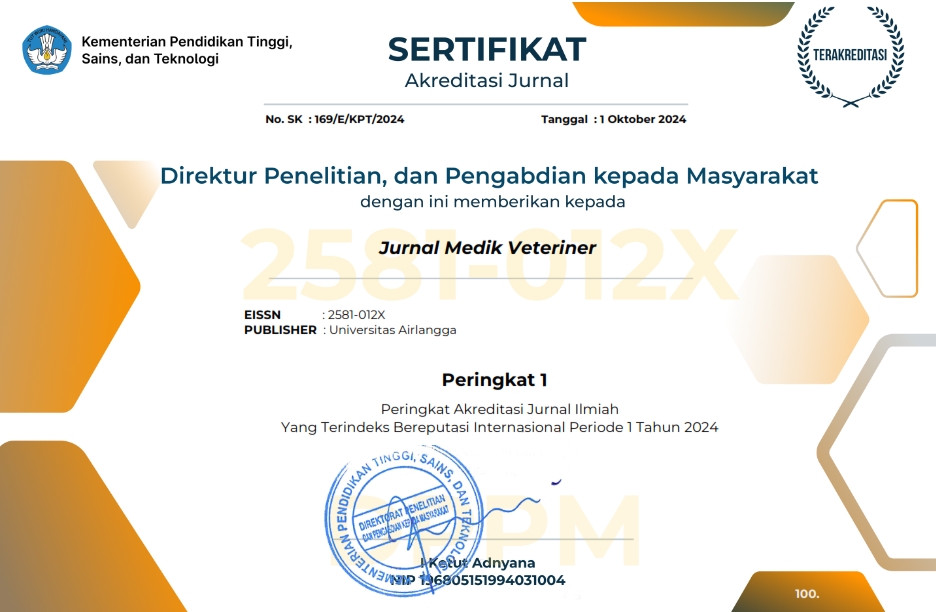Uji Organoleptis, pH, Uji Eber dan Cemaran Bakteri pada Karkas yang Diisolasi dari Kios di Banyuwangi
Downloads
Aberle, E.D., J.C. Forrest, D.E. Gerrard, E.W. Mills. 2001. Principles of Meat Science. 4th edition. Kendal/Hunt Publishing Company.
Agbeniga, B., E.C. Webb. 2014. Influence of electrical stimulation on carcass and meat quality of Kosher and conventionally slaughtered cattle. J. Anim. Sci. 44:5(1).
Anil, M.H., S. Love, C.R. Helps, D.A. Habour. 2002. Potential for carcass contamination with brain tissue following stunning and slaughter in cattle and sheep. Food Control. 13, 431-436.
Cheng, Q.F., D.W. Sun. 2008. Factors affecting the water holding capacity of red meat products: A review of recent research advances. Crit. Rev. Food Sci. Nutr. 48, 137-159.
Dinas Peternakan Provinsi Jawa Timur. 2015. Data Rumah Potong Hewan Se Jawa Timur. Surabaya. [Diakses 9 April 2015].
Endang, S. 2009. Tinjauan Bahan Pangan Asal Hewan Yang Asuh Berdasarkan Aspek Mikrobiologi di DKI Jakarta. Jakarta. http://peternakanlitbang.deptan.go.id.
Food Standards Australia New Zealand (FSANZ). 2013. Agents of foof borne illness. Ed 2nd. Australia-New Zealand.
Jay, J.M. 2005. Modern Food Microbiology. Gaithersburg, MD: Aspen Publishers.
Jeong, J. Y., S.J. Hur, H.S. Yang, S.H. Moon, Y.H. Hwang, G.B. Park, S.T. Joo. 2009. Discoloration characteristics of 3 major muscles from cattle during cold storage. Journal of food science, 74(1).
Lawrie, R.A. 2003. Ilmu Daging. Parakkasi A: penerjemah. UI Press. Jakarta. Terjemahan dari: Meat Science.
Permentan No.13 Tahun 2010. Tentang Rumah Potong Hewan.
Soeparno. 2005. Ilmu dan Teknologi Daging. Gadjah Mada University Press. Yogyakarta.
Syadiash. 2010. Pengertian dan Jenis-Jenis Pasar. Surakarta.
Copyright (c) 2018 Faisal Fikri, Iwan Sahrial Hamid, Muhammad Thohawi Elziyad Purnama

This work is licensed under a Creative Commons Attribution-NonCommercial-ShareAlike 4.0 International License.
Authors who publish in this journal agree to the following terms:
1. The journal allows the author to hold the copyright of the article without restrictions;
2. The journal allows the author(s) to retain publishing rights without restrictions;
3. The legal formal aspect of journal publication accessibility refers to Creative Commons Attribution-NonCommercial-ShareAlike 4.0 International License (CC BY-NC-SA).






11.jpg)




















